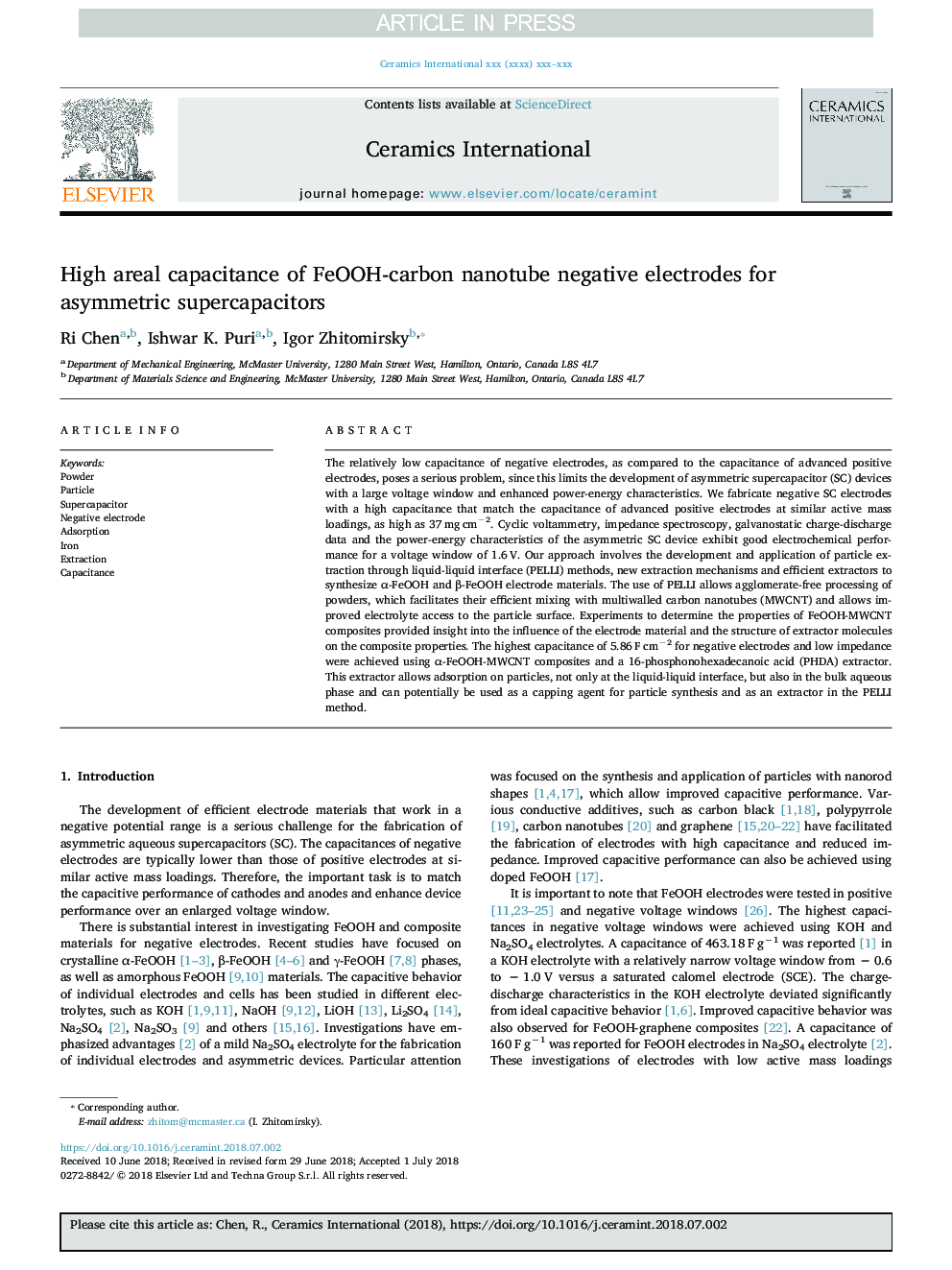| کد مقاله | کد نشریه | سال انتشار | مقاله انگلیسی | نسخه تمام متن |
|---|---|---|---|---|
| 8948478 | 1645668 | 2018 | 9 صفحه PDF | دانلود رایگان |
عنوان انگلیسی مقاله ISI
High areal capacitance of FeOOH-carbon nanotube negative electrodes for asymmetric supercapacitors
دانلود مقاله + سفارش ترجمه
دانلود مقاله ISI انگلیسی
رایگان برای ایرانیان
کلمات کلیدی
موضوعات مرتبط
مهندسی و علوم پایه
مهندسی مواد
سرامیک و کامپوزیت
پیش نمایش صفحه اول مقاله

چکیده انگلیسی
The relatively low capacitance of negative electrodes, as compared to the capacitance of advanced positive electrodes, poses a serious problem, since this limits the development of asymmetric supercapacitor (SC) devices with a large voltage window and enhanced power-energy characteristics. We fabricate negative SC electrodes with a high capacitance that match the capacitance of advanced positive electrodes at similar active mass loadings, as high as 37â¯mgâ¯cmâ2. Cyclic voltammetry, impedance spectroscopy, galvanostatic charge-discharge data and the power-energy characteristics of the asymmetric SC device exhibit good electrochemical performance for a voltage window of 1.6â¯V. Our approach involves the development and application of particle extraction through liquid-liquid interface (PELLI) methods, new extraction mechanisms and efficient extractors to synthesize α-FeOOH and β-FeOOH electrode materials. The use of PELLI allows agglomerate-free processing of powders, which facilitates their efficient mixing with multiwalled carbon nanotubes (MWCNT) and allows improved electrolyte access to the particle surface. Experiments to determine the properties of FeOOH-MWCNT composites provided insight into the influence of the electrode material and the structure of extractor molecules on the composite properties. The highest capacitance of 5.86â¯Fâ¯cmâ2 for negative electrodes and low impedance were achieved using α-FeOOH-MWCNT composites and a 16-phosphonohexadecanoic acid (PHDA) extractor. This extractor allows adsorption on particles, not only at the liquid-liquid interface, but also in the bulk aqueous phase and can potentially be used as a capping agent for particle synthesis and as an extractor in the PELLI method.
ناشر
Database: Elsevier - ScienceDirect (ساینس دایرکت)
Journal: Ceramics International - Volume 44, Issue 15, 15 October 2018, Pages 18007-18015
Journal: Ceramics International - Volume 44, Issue 15, 15 October 2018, Pages 18007-18015
نویسندگان
Ri Chen, Ishwar K. Puri, Igor Zhitomirsky,